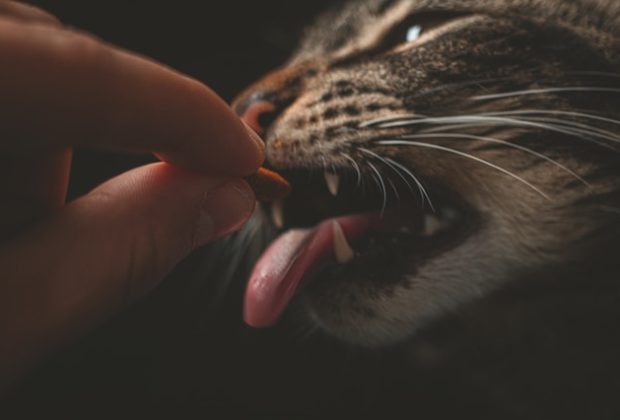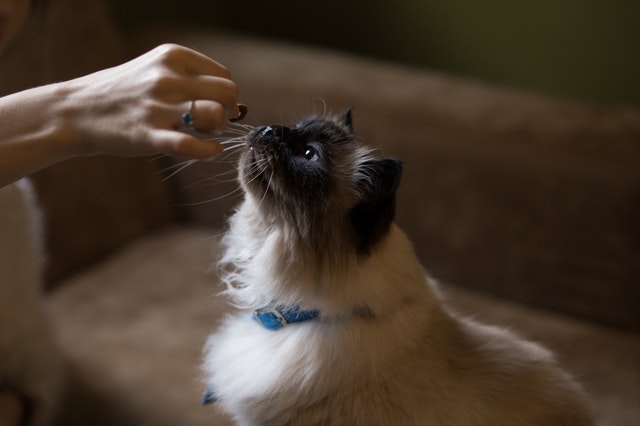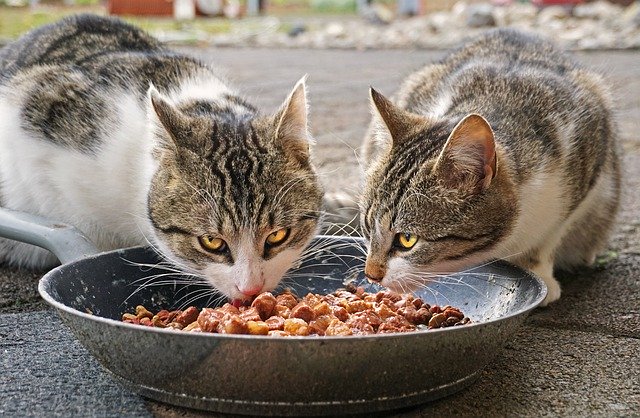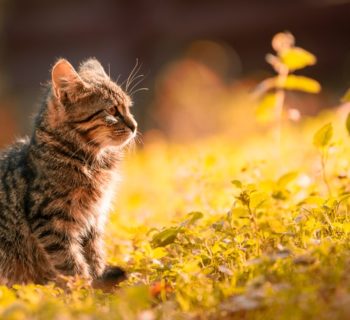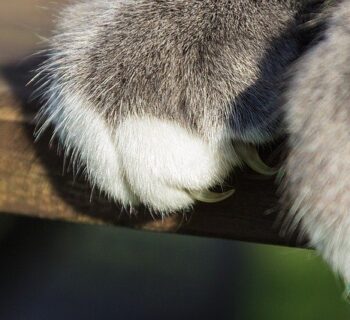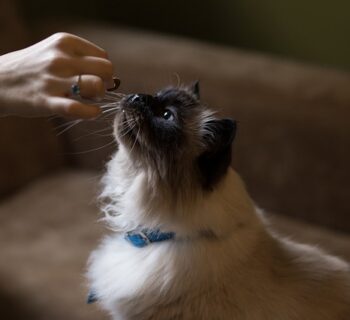Within 8 – 12 weeks of age, most kittens would have naturally weaned off their mother’s milk. At this age, they are old enough to start eating meals on their own. If they still suckle, meals are gradually introduced while reducing their dependence on milk from their mother.
At this point, it can become tricky; If a kitten grows up accustomed to a particular meal in her first year, switching things later often becomes challenging. On the other hand, if she is introduced to varieties of food in her first year, she’ll be open to eating different food types even if she has a favorite.
Below, we’ll list out several foods your kitten can enjoy in her first year of life, even if she still suckles.
What to Feed a Kitten
Undiluted Wet or Dry Kitten Food
From eight weeks old to her first year, you should introduce your cat to regular kitten food. Find a good brand, and even as you begin to include other foods, make it her primary food as too many brand changes could cause digestive upsets.
A kitten needs a complete, nutritionally balanced meal with a lot of water in order to help it grow. It is up to you whether you go down the route of wet or dry kitten food, but please ensure that your cat's hydration is looked after if the meal does not provide the water it requires.
Changing flavors may be fine to do on your own, but if you’re changing a brand every time, it can affect your cat. However, if you must, consult your vet before you do so.
Also, while kittens start to look like full-grown adult cats at around eight to nine months of age, you should still keep to her primary kitten food as they continue to develop throughout their first year before gradually moving to the adult cat food.
Feed It Bones
For most kittens, the permanent teeth appear between four to six months of age. It is safe to introduce raw meaty bones such as chicken wings or necks at this time (cats are carnivores, remember?). This helps to ensure that they are actively chewing by the time they grow permanent teeth. They also need this chewing activity to decrease “teething” problems that may occur and also strengthen teeth and gum health.
Again, these bones should always be fed raw. Avoid feeding your kitten cooked bones as they can easily splinter and even cause some internal damage. Introduce the bones gradually and ensure it is large enough so that the kitten does not fit the entire bone in its mouth or swallow it.
Large marrow, large knuckle bones, or bones sawed lengthwise should be avoided as your kitten could crack her teeth on them. Lastly, one raw bone per week is all your kitten may need, and always supervise while she’s at it.
Scrambled Eggs
Your kitten can enjoy a spoonful of scrambled eggs with melted cheese on the days you have it for breakfast. It is healthy nutrition for your kitten, and she’ll love it. However, you have to scoop out her share before adding salt or pepper.
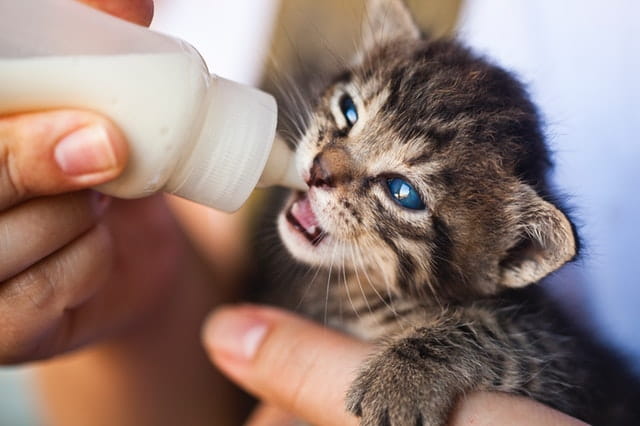
Fresh / Salt-Water Fish
Cats enjoy eating fish, and your kitten will too. You can share some of your cooked fish with her. Your feline will greatly appreciate a small amount of catfish, tuna, salmon, or trout though they enjoy any cooked fish at all. Give her only a small portion even if she begs for more, as that is all she needs.
Salad Greens
While they are obligate carnivores (carnivores that must eat meat), cats can use the fiber, vitamins, and minerals from vegetables. You can provide pinches of broccoli florets, diced lettuce, and other fresh salad greens, and that is usually all your kitten needs.
Cooked Meats
When you boil meats like cooked beef, chicken, turkey, lamb, venison, and other lean meats, your cat can partake as well. However, avoid feeding her fatty or greasy meats. Also, avoid feeding your cat with meat seasoned with salt, nitrates, colorings, or preservatives.
No matter how much she begs for it, please don’t give your kitten hot dogs, sausages, or bacon, as these can easily upset her digestive system and cause diarrhea. Do not also give her whole chunks of meat. They can get greedy, try to fit the whole of it into their mouth, and choke on it. Instead, shred them into small chewable pieces when you give her meat.
Squash Pumpkins
If squash is on the menu for dinner, you can serve your kitten a small portion. Cats enjoy it; grate a small slice of the squash or pumpkin and place it on a paper towel. Cover with another damp paper towel and microwave for a few seconds until it cooks. Let it cool and serve a small portion to your kitten. Have the rest refrigerated for another day.
Cat Grass
Most pet stores and even some grocery stores stock growing cat grass. You can buy the cat grass kit to grow on your own at home. Commonly the grass is either wheat or oat grass but sometimes a mixture of different grasses. These grasses provide vitamins, minerals, and fibers, but their primary purpose is to provide your kitten with a new experience.
The fun lies in uprooting the grass than eating it for many kittens.
Final words
Last, healthy cats love to eat, so if you notice that your kitten becomes unresponsive or shows no interest in meals, it may be a sign of an underlying health issue. You should have a vet look at your kitten immediately. Generally, the first few months of a kitten’s life can test her immune system, and there’s an elevated risk of illness during this time. Be sure to report any changes you notice, especially when it comes to symptoms like diarrhea and poor eating habits.
Also, ensure that whatever you introduce to your kitten does not account for over 10% of the total recommended daily calories. More than that, and you’d be upsetting your feline’s nutritional balance. Additionally, feed her only one new food at a time, and give her enough time to taste and know that food before offering any other new foods. If she appears not to enjoy it, you may have to stop and wait a while to try again.
That said, with these few kitten feeding tips, your furry little companion should get all the nutrition it needs even as it grows into adulthood.
Do you own a cat? What and how did you feed it as a kitten? Please share with us in the comments.
About the Author
Kirsten Heggarty
Kirsten created The Pet Handbook with the aim of sharing her knowledge about pets, pet food, healthy habits, and more. All of her advice is based on years of her own experience with her pets, and feedback that she has received from grateful readers about her tips. If you want to know more please read the About Me page.

